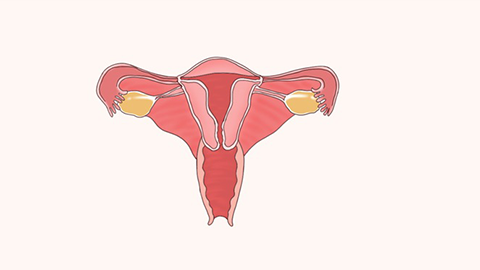What causes a slightly small uterus?
Generally, a smaller than normal uterus may be caused by delayed puberty development, individual developmental differences, premature ovarian failure, Turner syndrome, intrauterine adhesions, and other factors. It is recommended to seek timely medical consultation to determine the underlying cause and receive symptomatic treatment under a doctor's guidance. Detailed analysis is as follows:

1. Delayed Puberty Development: In adolescent females, the hypothalamic-pituitary-ovarian axis is not yet fully mature, resulting in insufficient estrogen secretion and slow uterine development, which manifests as a smaller uterus. Symptoms usually improve as development progresses. Enhancing nutrition by consuming more protein- and vitamin-rich foods, engaging in appropriate physical activity to promote physical development, and, when necessary, using estradiol valerate tablets under a doctor's supervision for a short period can help stimulate uterine growth.
2. Individual Developmental Differences: Some women may have a uterus slightly smaller than the normal range due to genetic factors. However, if menstrual cycles are regular, ovarian function is normal, and there are no other discomforts, it is considered physiological uterine hypoplasia. No special treatment is required, but regular gynecological examinations are advised to monitor uterine and ovarian function. Maintaining a regular sleep schedule and healthy diet is also important.
3. Premature Ovarian Failure: Ovarian function衰退 before age 40 leads to insufficient estrogen secretion, affecting normal uterine development and causing a smaller uterus, often accompanied by oligomenorrhea or amenorrhea. Patients may follow medical advice to use hormone replacement therapy with medications such as estradiol valerate tablets, conjugated estrogens tablets, or progesterone soft capsules to promote uterine development. Additionally, avoiding late nights, reducing psychological stress, and protecting ovarian function are recommended.
4. Turner Syndrome: A congenital chromosomal abnormality disorder characterized by underdeveloped ovaries and insufficient estrogen secretion, leading to poor uterine development and a smaller uterus, often accompanied by short stature and primary amenorrhea. Patients require long-term estrogen replacement therapy under medical supervision, such as estradiol valerate tablets or nylestriol tablets, to promote uterine and secondary sexual characteristic development. Growth hormone therapy may also be necessary to improve height.
5. Intrauterine Adhesions: Repeated intrauterine surgeries can damage the basal layer of the endometrium, causing partial or complete adhesion of the uterine cavity. The uterus may appear smaller due to lack of normal endometrial support, accompanied by decreased menstrual flow or amenorrhea. Patients require hysteroscopic adhesiolysis to separate the adhesions and restore normal uterine cavity morphology. Postoperatively, estradiol valerate tablets should be taken as directed to promote endometrial repair and prevent re-adhesion.
Maintaining healthy lifestyle habits, avoiding excessive fatigue, practicing good menstrual hygiene, and minimizing the number of intrauterine procedures are important. For pathological cases of a small uterus, active cooperation with medical treatment of the underlying disease and regular follow-up evaluations of uterine size and function are necessary to maintain reproductive health.




